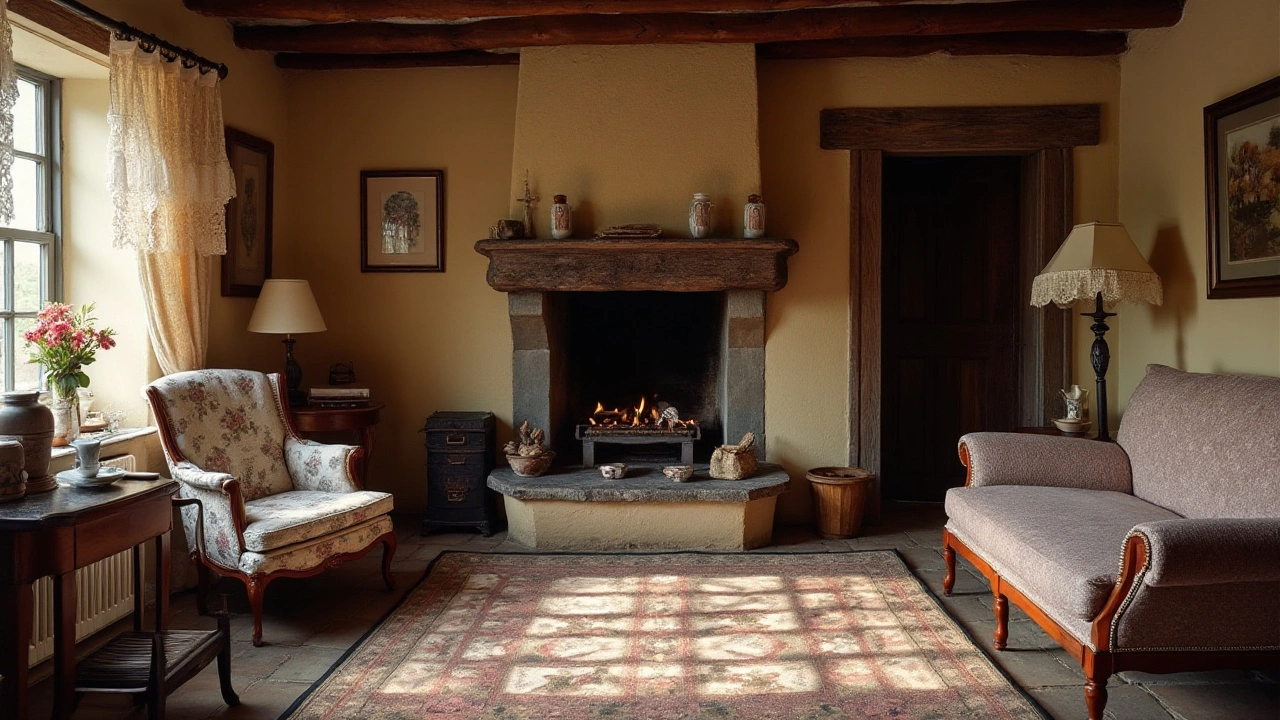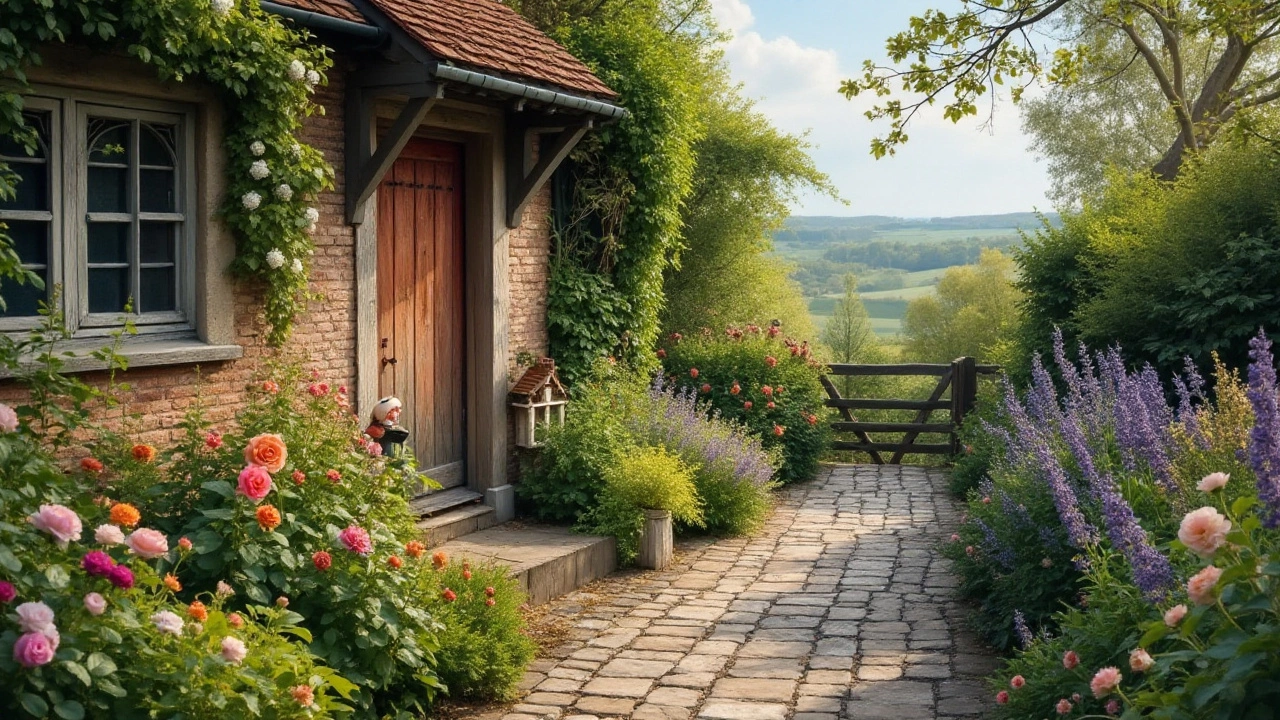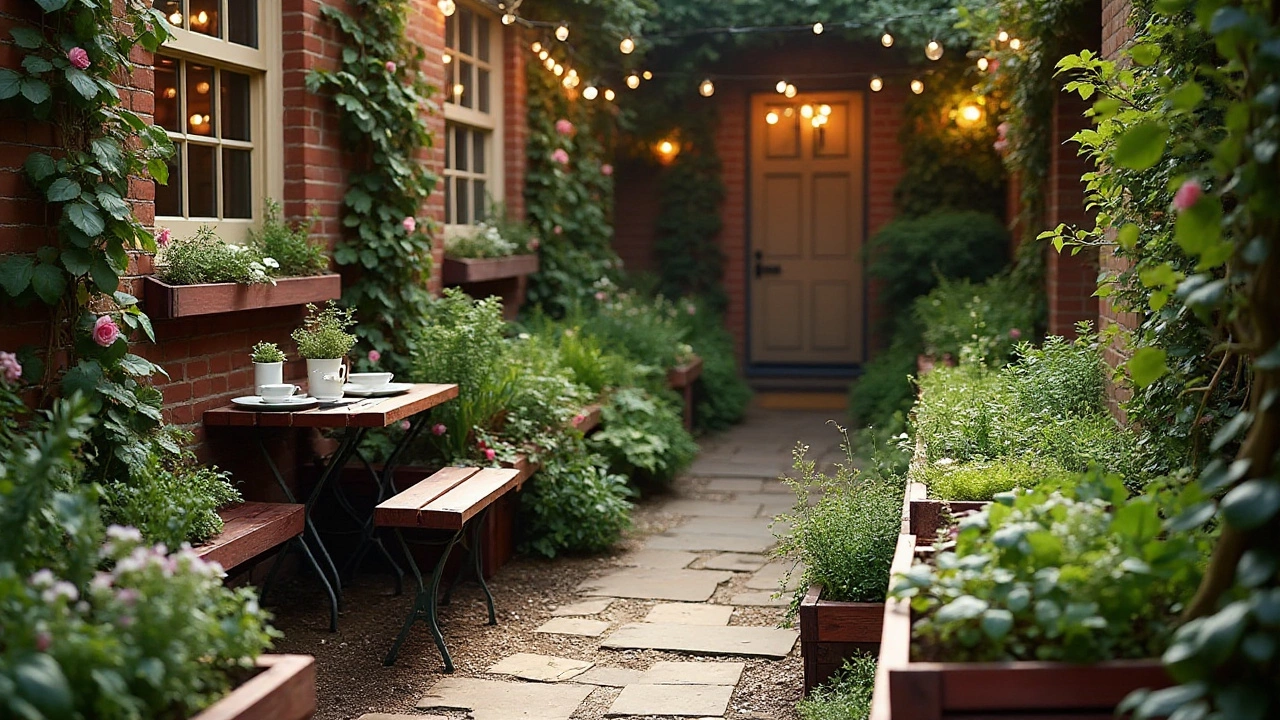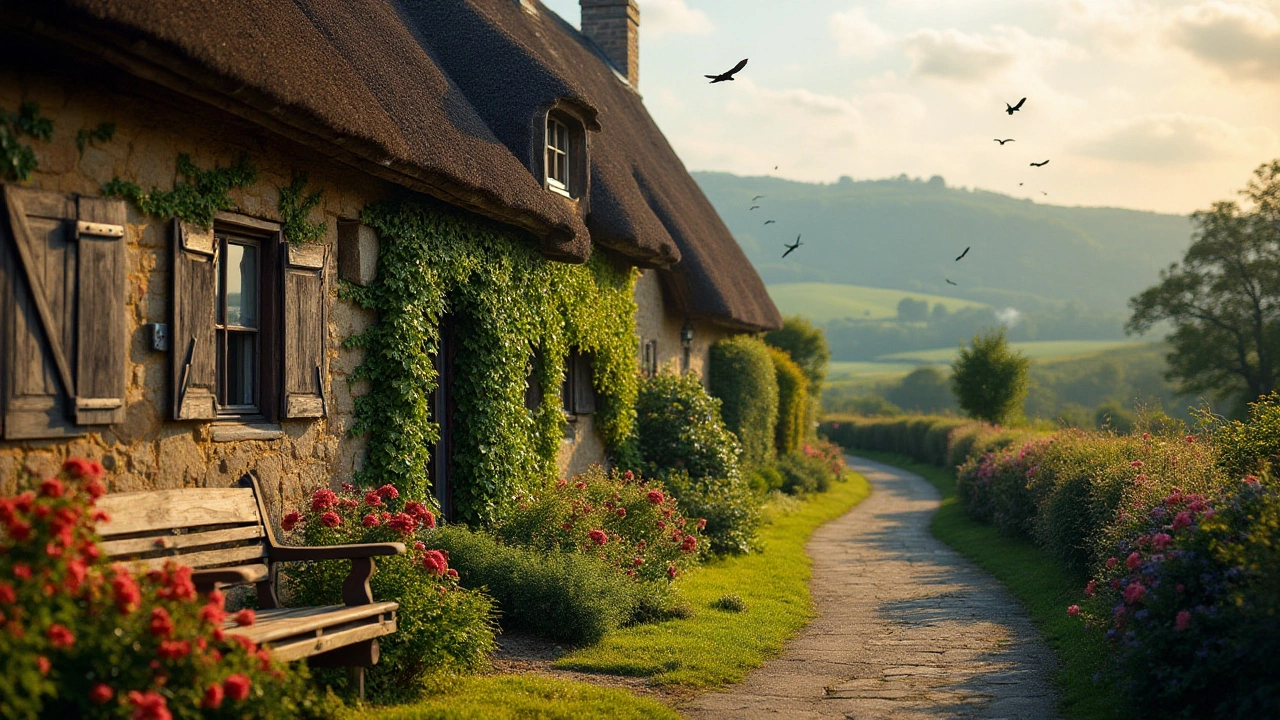There is something uniquely warm and inviting about a cottage. They are more than just a home; they evoke a feeling of tranquility and comfort, merging effortlessly with the landscapes they inhabit. Cottages have been tucked away in quaint corners of the countryside for centuries, and their appeal has only grown over time.
Whether it's the rustic charm of timber beams or the aroma of baking bread wafting through a cozy kitchen, cottages offer a glimpse into a simpler, more relaxed way of living. But what exactly is it that transforms a house into a cottage? Let's journey through the characteristic features and timeless allure that make these homes so enchanting.
- Architectural Characteristics
- Interior Features
- Natural Surroundings
- Creating a Cottage Feel Anywhere
Architectural Characteristics
Cottages are renowned for their unmistakable charm, reflected through their architectural characteristics which set them apart from other types of homes. Perhaps the most iconic feature is their quaint, irregular silhouette, often complemented by steep, thatched roofs or gabled tops that resemble a child's drawing of a house. These elements not only enhance their aesthetic appeal but also served a functional purpose historically, facilitating rainwater runoff and providing insulation against the English weather. Country cottages typically boast a modest, single-story design, although attic spaces are frequently remodeled as cozy lofts, offering additional living space without disrupting the exterior's humble facade. It's common to see deep-set windows framed with shutters, sometimes peaking out from beneath a climbing rose or tangled ivy, inviting both natural light and the idyllic views of natural surroundings, which are a hallmark of rural living.
Materials play a crucial role in defining the traditional cottage style. Stone and brick are frequent choices, exuding a historic charm that aligns seamlessly with the timeless landscapes. Wooden beams, often exposed, lend warmth and rusticity to the interiors, while externally, they add texture and depth to the facade. Local resources historically dictated these choices, leading to a diversity of cottage styles across different regions. From the honey-colored limestone of the Cotswolds to the slate-roofed cottages in Wales, each variant pays homage to its geographical roots, whispering tales of times gone by.
Quaint details like charming chimneys and quirky doors complete the picture, each with its own story. In the words of architectural historian Clive Aslet, “Cottages are the memory boxes of society, each stone or timber telling a tale.”
“It's not just bricks and mortar, but history and heart that make up a cottage.”Many cottages feature original timber frames and low ceilings, creating an intimate atmosphere that's hard to replicate in modern constructions. These elements, once born out of necessity, have become beloved traits among enthusiasts of the cottage style, admired for their ability to transport inhabitants to a simpler time.
A cottage's exterior often embraces asymmetry, a deliberate departure from the rigid symmetry found in urban Georgian homes. This free-spirited approach extends to the landscaping, where gardens are less manicured and more of a whimsical patchwork of blooms and herbs, very much an extension of the architecture itself. Front doors open onto trails of brick or cobblestone paths, leading wanderers through secret nooks, where hidden benches invite repose. Such designs blur the lines between nature and architecture, an allure that's often sought after by dreamers and romantics alike. To the untrained eye, these elements may appear purely aesthetic, yet they underscore an architectural integrity and resourcefulness intertwined with nature, a testament to the timeless appeal of cozy homes.

Interior Features
When one steps into a country cottage, the first thing that captures attention is the unmistakable sense of coziness that envelops the space. This ambiance is crafted through a careful blend of textures, color palettes, and furnishings that pay homage to simplicity and comfort. Walls adorned with pastel hues often set the stage, as these gentle colors reflect light softly, enhancing the sensation of spaciousness despite potentially small room sizes. Whitewashed walls or wooden paneling echo the rustic charm of bygone eras, creating a space that invites you to rest and unwind.
Another defining element in the interior of a true cottage is the presence of wood. Whether it's exposed beams overhead, distressed wooden floors underfoot, or vintage wooden furniture pieces scattered throughout, this natural material is pivotal. It brings warmth and authenticity to the space, serving as a tactile reminder of a lifestyle closely connected to the earth. Layering textures such as woven rugs, knitted throws, and plush cushions adds softness and depth, encouraging you to sink into an armchair by the fireplace on a blustery day.
Cottage style often includes an eclectic mix of furnishings, where cherished heirlooms meet vintage market finds. This mix-and-match approach ensures each room tells a story, drawing on the history and personal tastes of its inhabitants. The furniture layout often encourages intimacy, with pieces arranged to inspire conversation and camaraderie. A well-positioned armchair near a window overlooking a lush garden or serene landscape offers the perfect spot for introspection or leisurely reading.
Many cottages feature a kitchen that serves as the heart of the home. Open shelves displaying well-loved mugs and plates, a rustic wooden table inviting family meals, and perhaps a cast-iron stove that offers more than just culinary warmth. These spaces are designed to be functional yet nurturing, blending the charm of rustic living with timeless practicality.
“A kitchen should be designed around what’s truly important—fun, food, and life,” says renowned interior designer Nigel Slater.This philosophy is often realized in cottages, where culinary spaces blend seamlessly with dining areas, encouraging communal experiences and storytelling over shared meals.
Finally, don’t underestimate the power of a well-curated display of beloved objects to add a personal touch. Whether it’s an array of wildflowers in earthenware vases, an assortment of antique picture frames, or hand-thrown ceramics sitting proudly on a mantelpiece – these details speak to the heart’s connection with the home. Each item is chosen not just for aesthetic appeal but for the emotional connection it inspires, much like the cottages themselves which, for many, represent a sanctuary away from the hustle and bustle of modern life.

Natural Surroundings
A cottage is deeply connected to its natural environment, each one seemingly part of the landscape it inhabits. These homes are nestled in areas where the essence of rural living is palpable, embracing elements like lush greenery, expansive fields, and tranquil water bodies that stir a sense of peace and grounding. The essence of a country cottage lies not just in its cozy architecture but also in how it harmonizes with nature. From wildflower gardens to untouched woodlands, cottages boast surroundings that are a feast for the senses. The simplicity and authenticity of nature reflect back into the home.
In truth, the best cottages are those that make the most out of their surroundings, offering picturesque windows that frame the enchanting landscapes outside. This connection to nature encourages outdoor living spaces, like patios or gardens, where one can truly appreciate the serene beauty of the natural world. Many cottages even have cozy homes for wildlife, inviting birds, rabbits, and other creatures into their gardens, thereby creating a synergistic relationship with nature. An interesting note is that cottages often utilize native plants that thrive with minimal maintenance, allowing the garden to stay in step with the seasons.
Revealed in rural living studies, people living closer to natural landscapes often report higher levels of happiness and reduced stress. One particular study published in the Journal of Environmental Psychology revealed that those who interacted regularly with their natural surroundings exhibited significantly greater well-being than those who did not.
"The healing power of nature is timeless", notes eco-psychologist Dr. Jane Stevens. "Cottages are a testament to how connecting with our natural surroundings can nurture the spirit and enhance our lives."Whether enveloped in a forested enclave or situated near a lively stream, a cottage that's in tune with its environment is like a retreat from the chaos of modern life. A respectful integration with nature isn't just idealistic—it's sustainable too, with many cottages adopting eco-friendly practices such as rainwater harvesting and solar energy to lessen their impact on the earth.
Touching upon the timeless allure of the cottage style, there are many ways to enrich a home's connection to its natural surroundings. Adding a pollinator-friendly garden brings vibrant blooms that not only attract life but also mirror the charming untamed beauty of nature itself. If your cottage is near a body of water, adding a little dock or sitting area enhances opportunities to soak in the tranquil water views. Truly, creating and cherishing natural surroundings is more than aesthetics; it's about a lifestyle that embraces the earth's gifts with gratitude and stewardship. For those yearning to bring this connection to their homes in an urban setting, partnering with green spaces or balcony gardens offers a small but profoundly impactful taste of nature's bounty right at your doorstep.

Creating a Cottage Feel Anywhere
The allure of a cottage lifestyle isn't confined to the rolling hills of the English countryside. Whether you reside in a bustling urban apartment or a modern suburban house, you can infuse your space with the quaint charm and rustic beauty typically found in rural dwellings. The key to capturing the essence of a country cottage lies in making thoughtful choices that prioritize comfort, warmth, and simplicity.
Begin with the color palette. Cottages often draw inspiration from nature, utilizing soft, muted tones that create a calming atmosphere. Think gentle creams, sage greens, and dusky blues. By incorporating these colors into walls or furnishings, you can mimic the tranquil ambiance of rural homes. Next, consider your materials. Opt for natural elements like wood, stone, and wool that add texture and a sense of history to any space.
- Wooden Beam Accents: Exposed beams or wooden accents lend an authentic touch, akin to the interiors of older cottages. If beams aren't feasible, wooden furniture and decor can achieve a similar effect.
- Fireplace Focal Points: Many cottages feature a cozy hearth as a central gathering spot. Even if a real fireplace isn't an option, electric or wood-burning stoves can provide the same warmth, both in style and temperature.
- Textiles and Soft Furnishings: Embrace plentiful textiles like fluffy throws, cushions, and vintage quilts. These not only elevate comfort but also add layers of visual interest.
Furniture should be comfortable and practical. Think overstuffed sofas or distressed wooden tables that invite you to sit and stay awhile. The idea is to create spaces that favor relaxation over formality. Add personal touches with antique or handmade items that carry stories, making your space uniquely yours. Hang framed prints of idyllic landscapes or countryside scenes to evoke the feeling of being enveloped by nature.
"A house is made with walls and beams; a home is built with love and dreams." – Ralph Waldo Emerson
Lastly, don't forget about the gardens, balconies, or windowsills. Cottages are often surrounded by lush greenery which can be replicated by potting herbs, flowers, or small shrubs, bringing a sprig of the outdoors to your doorstep. It's the greenery that will bind the stitches of your carefully curated cottage theme, blending exterior beauty with interior coziness.
Achieving the cottage style is more accessible than one might think. By harnessing elements of natural beauty, tactile comforts, and timeless warmth, you can transform nearly any environment into an inviting retreat reminiscent of the coziest homes found in the countryside. And as you nestle into your haven, discover the simple pleasure of enjoying a charming, relaxed atmosphere—no matter your postcode.
